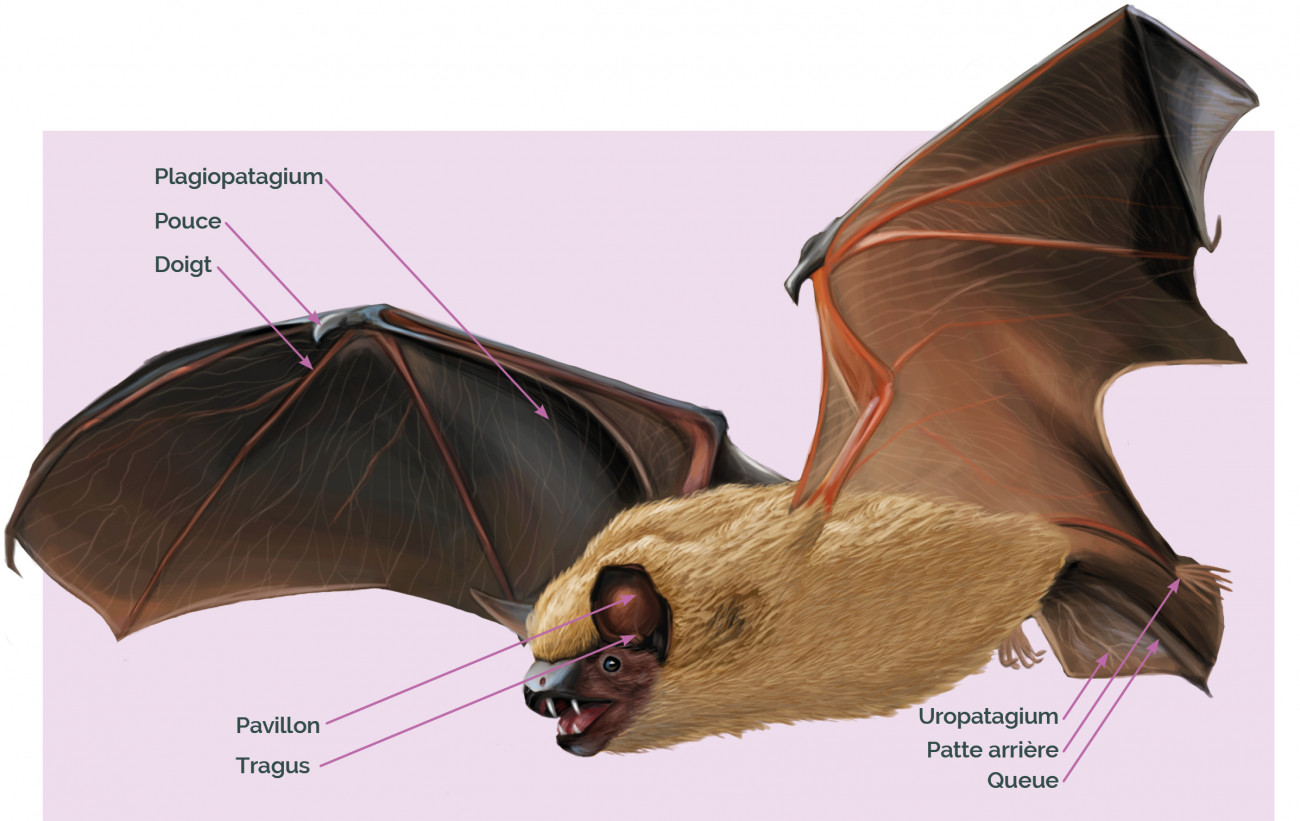Flight adaptations
If there is one thing everyone knows about bats, it is that they fly. But while flying gives bats many advantages, it is also a limiting factor.
The advantages and disadvantages of flight
Bats are the only flying mammals and this characteristic gives them many advantages:
- They have access to food that is inaccessible from the ground,
They can move quickly and escape when necessary,
they have access to secure roosts, which few predators can reach.
However, this type of movement also has some disadvantages. The main one being that this mode of movement is very energy intensive, moving in the air consumes twice as much energy as running!
The bat's wing
Bat flight is made possible by a modification of the forelimbs, as in birds. Bats do not fly with feathers but with membranes made of skin and muscles called patagiums. Depending on its position on the animal's body, the patagium has a different name. The wing of bats, the plagiopatagium, connects their very long fingers (except the thumb) to their body. In all European species, the uropatagium also connects the hind limbs and the tail, thus contributing to flight and, in some species, to the capture of prey.
Un corps adapté au vol
Pour pouvoir voler, les chauves-souris ne possèdent pas simplement des ailes. Tout leur corps est adapté pour rendre le vol possible.
- Les os des épaules (la ceinture scapulaire) et les clavicules sont soudés ce qui permet aux muscles qui permettent aux ailes de battre de s’y insérer. Certaines vertèbres sont également soudées rendant ainsi la base de la colonne vertébrale rigide pour supporter les pressions du vol. Enfin tous les os sont à la fois souples et très solides.
- Le système circulatoire est aussi adapté au vol : le cœur est trois fois plus gros que chez un mammifère de la même taille et bat deux à six fois plus vite en vol qu’au repos. Ceci permet d’irriguer les muscles de l’aile.
- La respiration est couplée aux battements d’ailes, ce qui permet d’économiser de l’énergie en réalisant l’ensemble dans le même mouvement.
Cette adaptation au vol n’empêche pas la locomotion au sol. Les espèces y courent à quatre pattes, appuyées sur leurs poignets. Le Grand Murin par exemple, chasse de cette façon au sol les carabes (des scarabées carnivores), composant l’essentiel de son régime alimentaire.
The 'second heart' of bats
Fine muscles are present in the walls of the arteries and veins of the patagium, which contract and allow the blood to flow throughout the wing membrane, which has a very large surface area. This system is called the venous heart.

